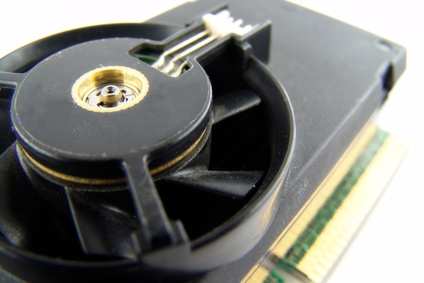
Coolant temperature sensors often become corroded after long-term use. The coolant temp sensor sends a signal to the engine control computer that registers on the engine temperature gauge located in the driver's dashboard. Some vehicles do not use a gauge for engine temperature. The engine temperature simply shows up as a warning light indicating an overheat condition. When the coolant sensor is corroded, it gives a faulty reading to the engine computer indicating an overheat condition when none exists.
Find the coolant temperature sensor in the engine block on the driver side of the engine compartment. It is screwed into the block and has a wire lead running to the engine wiring harness. Once you locate the sensor, disconnect the wire lead going to the sensor with an open end box end wrench. Inspect the wire lead for melted insulation and discolored insulation. Either condition will require you to replace the wire lead.
Make sure the engine has cooled enough to prevent burn injury. Use the appropriate socket and ratchet or open end box end wrench to loosen the temperature sensor. Turn the ratchet or wrench counter clockwise until the sensor is loose enough to turn by hand. Unscrew the sensor and remove from the engine block.
Check the temperature sensor for corrosion and the wire lead for damage. Replace the sensor and reconnect the wire lead. Start the engine and allow it to heat up to operating temperature. The cooling fan should come on automatically as the engine temperature increases.
Use a gloved hand to squeeze the input hose for pressure. If pressure exists, it means that the coolant is flowing to maintain the engine operating temperature. Now check your engine temperature sensor or warning light to see if it is reading properly.